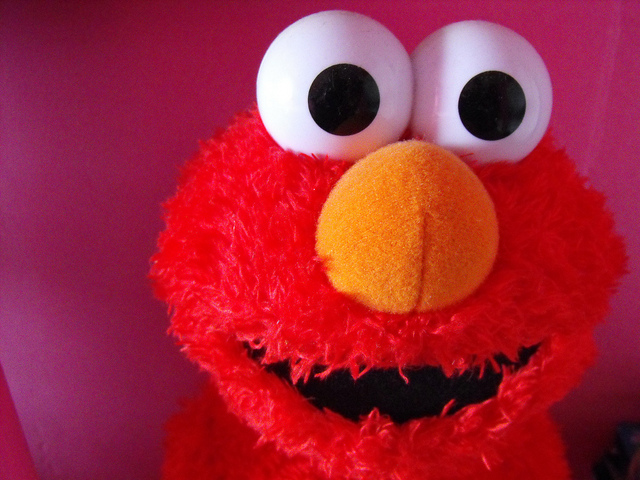
By Reyna Eisenstark
This is how I used to explain my ex-husband. “The thing about C is,” I’d say, “if he was washing the dishes, and he heard someone call out for help—one of our kids or, really, anyone—he would drop what he was doing immediately, his hands covered in soapy water, and would run to help that person. As for me,” I’d add. “I’d take just a couple extra seconds to dry off my hands on a towel.”
This story always delighted me, so certain was I of its simple truth. I believed that it made C the better person, selfless, urgently devoted, able to react better in an emergency. It was not until our marriage ended that I began to see the flaw in this description of him, the fact that, in his rush to help whoever needed helping, he would track soapy water all over the kitchen floor (and possibly all over the house) with his still wet hands. And that later someone would come back to the house and maybe, exhausted from whatever emergency had just been attended to, would slip on the wet, soapy floor. Or would simply look around at the disaster of the kitchen and feel defeated.
This, I eventually realized, was a symbol of our marriage, the fact that he was always dashing off to do things and was living entirely in the moment, and I was always thinking ahead, whether it was seconds ahead or a lifetime ahead. The fact is, I would take those few seconds to dry my hands, even in an emergency, because I never stopped thinking about what was around me and how I and the rest of us would come back to it.
I was raised to think that extravagant gestures meant love. When my older daughter was just nine months old, we were waiting for the results of a medical test (which would eventually turn out to be fine), and, expecting the results the next day, I drove with my daughter to my mother’s house, two hours south. But just as I had driven away, the doctor called with the news and C called my mother to tell her. (Like all stories of the past, this would have ended differently if we’d had cell phones.) This phone call was, for some reason, not enough for C and so, deciding he wanted to be the first person to tell me the news, he jumped into his car, barefoot, and drove eighty miles an hour down the Taconic, so that he was waiting at my mother’s house when I got there. My mother was dazzlingly impressed, which was no surprise. I will never forget this, she said. I suppose she never has.
Dramatic love was the only kind of love, according to my mother, and when, for example, my stepfather drunkenly punched a hole into our bathroom wall, she put a nice framed picture over it. Problem solved. My stepfather loved my mother so much that he often became furious with her in public, so certain that she was flirting with every man in sight. This wasn’t exactly incorrect though. They were quite a pair.
Back when C and I were not yet married, I told a friend of mine about a fight in which C had torn a twenty-dollar bill in half. It was a fight about money, I added, helpfully.
My friend looked at me for a minute. Then he smiled carefully and said, “You really have a passionate relationship, huh?” I smiled back, thinking this was a compliment.
The time that C slammed our back door so hard that the glass shattered became a story about how he, wonderfully, returned an hour later with some new glass and carefully replaced what he’d broken. Sure, he had a bad temper, but he could fix things so well! I was careful not to mention the other doors and objects that he had broken in anger over the years. One was enough for a story.
At a diner one afternoon toward the end of my marriage, my friend Erin looked across the table from me and said, “You do know that not all men yell at women, right?”
I nodded yes, as it was at the same time slowly dawning on me that I actually did not know this, that I had taken it as truth my entire life.
When things were good, and I pictured C, I imagined myself running toward him, which to me proved that this was the love I had been meant for. He would protect me from anyone, except, of course, when I needed it most, from him.
•••
And now, four years into the very last relationship of my life, I wonder about how my boyfriend would react to someone calling out for help while he was washing the dishes, and I realize that I have never even considered this because emergencies are no longer in the forefront of my mind. I don’t picture the dishes, the soapy floor, any of it. There is no longer any drama, any extravagant gestures.
In fact, the story I might tell of him involves the early days of our relationship when, on a weekday morning, we’d sit side by side in the living room, with ambient music on in the background, holding hands and taking sips from our coffee, and simply the perfect stillness and calm I felt during those early mornings, which has become the symbol for how I pretty much always feel with him. No one is racing off to start some impossible new project that will never get finished or to demonstrate undying love as a kind of fury. Instead, the dishes will get done, we’ll dry our hands off, and then we’ll most likely get into bed together and read.
This kind of love is no less fierce, but where it once was like being smack in the middle of a storm, now it is like watching a storm from the safety of your porch, all that beautiful swirling energy, as thrilling as ever, but bringing with it only the feeling of comfort, never harm.
•••
REYNA EISENSTARK is a freelance writer living in Chatham, New York. You can read more of her writing at reynaeisenstark.wordpress.com.

 Follow
Follow
